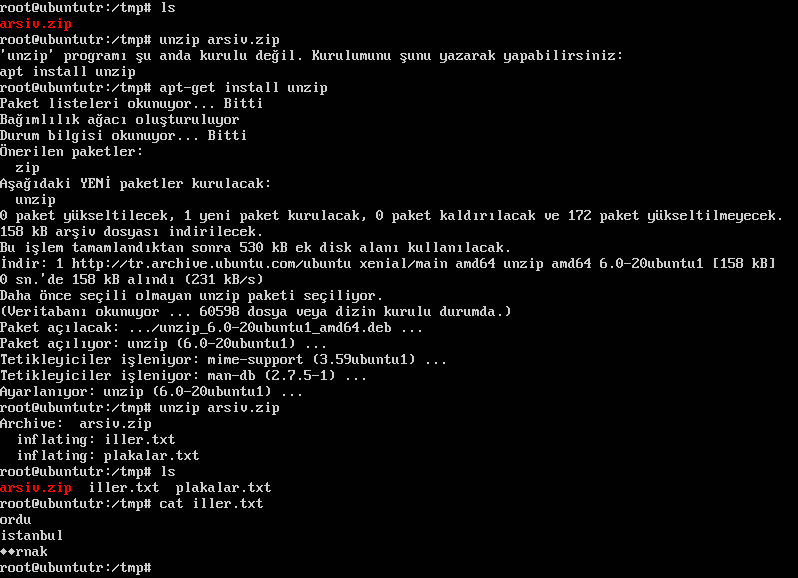
It even works as a filter.ħz doesn't create archives with full filesystem information on UNIX, so you'd need to use tar before using 7z (but since 7z stores other information about the tar file, I'd recommend using xz, as it is designed for it): tar cf - file1 file2 dir | 7za z -si archive.tar. Xz is a UNIX tool, that uses LZMA2 for compression, but works the way gz, bz2, etc works.

If you want to use the same compression algorithm with your tarballs, use the -J switch with tar: tar cJf file1 file2 dir But, unzip -o tempp.zip 2>/dev/null still prints the output like below which i wish to avoid. With your suggestion I was able to suppress tar output.
#Unix untar unzip command how to
I recommend this method in case Windows users can't open 7z archives (in case you want to advice a tool for that: PeaZip). I do not know how to differentiate between terminal and standard output. Its easy to gunzip or even bunzip2 the files with a simple command-line switch.

It can also create self-extracting archives with the -sfx switch: 7za a -sfx archive.exe files1 file2 dir

Usually in the package p7zip, you'll get the 7z and 7za command, with which you can create your own 7z archives.ħza can also decompress standard ( pkzip) zip archives (and create them as well with the -tzip switch).Ĭompressing: 7za a archive.7z file1 file2 directory/ The main features of 7-Zip High compression ratio in 7z format with LZMA and LZMA2 compression Supported formats: For ZIP and GZIP formats, 7-Zip provides a. Well, when it comes to distributing files for a variety of operating systems, I'd recommend 7-zip. Dear friends, My requirement below- 1 I have a zip file on unix server - ETLExtracts20100218175009.zip which is.


 0 kommentar(er)
0 kommentar(er)
